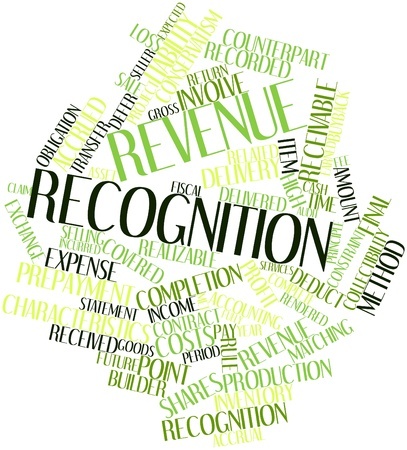Accounting
8 Steps to Compliance with New Revenue Recognition Standards
Jun. 09, 2017

For most companies and financial organizations, all eyes may be on regulatory changes and tax reform. But as we approach mid-year, public and private entities must also prepare for adoption of new revenue recognition standards established by the Financial Accounting Standard Board (FASB) and International Accounting Standards Board’s (IASB). The deadline for implementation of the new standards is January 1, 2018 for public companies and January 1, 2019, for non-public entities.
The new revenue recognition standard (ASU-2014-09) establishes the principles to report useful information to users of financial statements about the nature, timing, and uncertainty of revenue from contracts with customers. The standard affects any entity —public, private, or not-for-profit – that contracts with customers to transfer goods and services and also nonfinancial assets (unless those contracts are within the scope of other standards). The standards have created anxiety among many organizations, especially those that are feeling somewhat unprepared. And while planning will certainly soften the blow, it is important to recognize that the changes can be complicated, costly, and painful to implement.
If they haven’t done so already, now is the time for CFOs, financial executives, and private equity firms to execute an action plan to ensure that their organizations or portfolio companies are fully prepared.
We recommend the following eight step process to help prepare for the transition.
Step 1 – Identify the Project Sponsor(s) and Change Management Group
If a company’s management has not assembled the team that will sponsor and take ownership of the transition process, it should do so immediately. Postponing this key first step could be highly detrimental to an effective implementation plan.
Step 2 – Build an Implementation Task Force
The task force should include members from various functions within an organization, including accounting and finance and IT. It should also include members of the sales and operations team who are critical in identifying the most important aspects of any contracts with customers. Furthermore, the salespeople will be able to provide the task force with much-needed information about the company’s processes for negotiating with, and issuing contracts to, customers.
Step 3: Train and Educate Personnel
Guidance has already been published on revenue recognition and additional information is expected throughout 2017. External auditors, the SEC website, AICPA and state CPA societies, and technology providers with revenue recognition software solutions can also be excellent sources of information. The implementation task force will be responsible for informing, educating, and providing training to key stakeholders (e.g., Board and Audit Committee members, C-Suite members, Legal).
Step 4: Understand Key Revenue Streams, Accounting Policies, and Treatment
Create an inventory of all contracts between the company and its customers. This must include specific payment terms and conditions, all of which may impact how revenue will be recognized on a go–forward basis. Involve sales and other personnel with extensive knowledge and experience with the nuances of each and every contract. Complete this step early enough to allow for some initial tests of how the new guidance affects the recognition of revenue from these contracts.
Step 5: Select a Sample of Contracts and Apply Standard
Choose a representative sample of contracts to begin assessing the impact — if any — of the new standard, avoiding general assumptions about the implications. The best way to begin evaluating potential gaps is to apply the new standard to a sample of existing contracts. The key is to look for similarities and differences between recognition processes under the existing guidance and the new standard.
Step 6: Conduct an Impact Assessment
Look back at the work done previously when sampling the company’s contracts and project the impact on each contract’s revenue recognition forward into the income statement and footnotes. For each accounting and disclosure impact area, identify potential changes and gaps impacting the current reporting structure, data needs and requirements, current policies and procedures, and IT systems supporting the revenue recognition process.
Step 7: Commence Conversion
At this point, a company should determine which adoption method – full retrospective approach or modified retrospective approach – it will proceed with if this was not addressed at the outset of the project. From here, map all of the accounting policy differences noted during the impact assessment and begin to establish new policies and processes sufficient to address those gaps while also dealing with various systems impacts.
Step 8: Implement and Embed New Processes to Comply on a Go-Forward Basis
In this final step, the company will begin institutionalizing its new compliance processes, collecting and converting data in accordance with the new standard on a going-forward basis. The company should test any new processes and controls (both manual and systems-based) that result from the conversion process to ensure both the accuracy and reliability of the new revenue information.
————–
Mario Pompeo is a partner with CohnReznick and leads the firm’s CFO Advisory Practice. He can be reached at mario.pomeo@cohnreznick.com .
Jeremy Swan is a principal with CohnReznick and leader of the firm’s Private Equity and Venture Capital Practice. He can be reached at jeremy.swan@cohnreznick.com .
